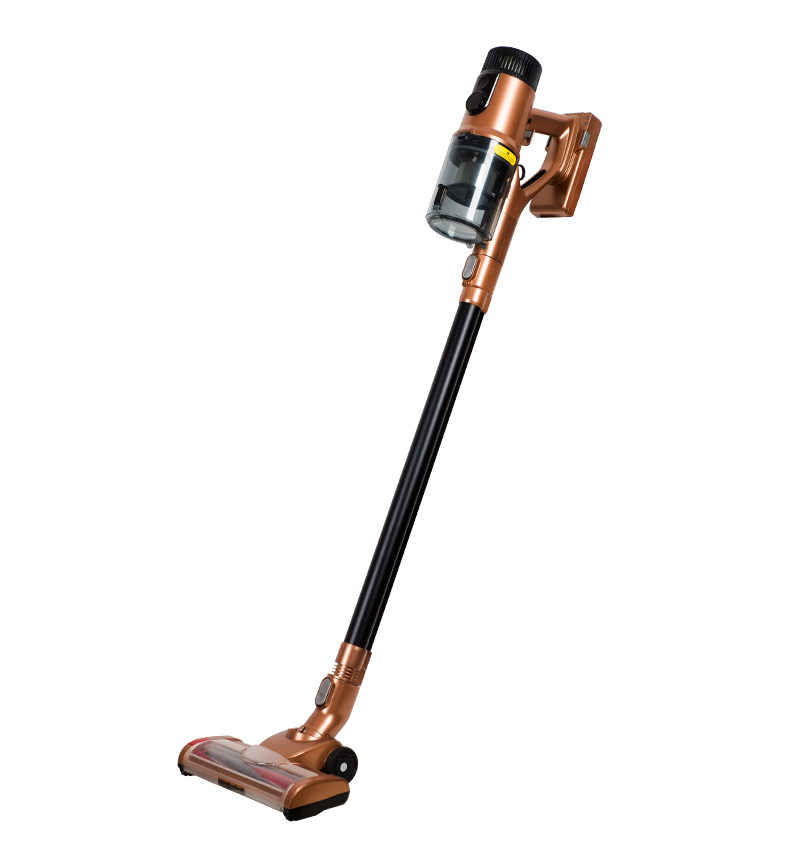The design of the motor and airflow system in a cordless vacuum cleaner is crucial to its overall cleaning efficiency. Here’s how these components impact performance:
1. Motor Design:
Suction Power: The motor’s design directly affects the suction power of the vacuum cleaner. A high-efficiency motor with advanced engineering can generate stronger suction, which is essential for picking up dirt and debris from various surfaces.
Brushless Motors: Many modern cordless vacuum cleaners use brushless motors, which are more efficient and durable than traditional brushed motors. Brushless motors offer higher power output, longer battery life, and less maintenance.
Motor Speed: The speed at which the motor operates influences suction strength. Variable speed settings allow users to adjust the motor’s performance based on the type of cleaning task, providing optimized efficiency.
2. Airflow System:
Air Path Design: The design of the airflow system, including the air path and ducting, affects how air moves through the vacuum cleaner. A well-designed airflow system minimizes air resistance and maintains strong suction power by directing air efficiently from the brush head to the dustbin.
Cyclonic Technology: Many cordless vacuums use cyclonic technology to separate dust and debris from the air. This system creates a centrifugal force that spins particles out of the airstream and into the dustbin. Efficient cyclonic separation helps maintain consistent suction power and prevents clogging.
Filter Placement and Efficiency: The placement and type of filters in the airflow system impact air quality and suction. High-efficiency filters, such as HEPA filters, capture fine particles and allergens, improving indoor air quality. Proper filter design ensures that air flows through the filter effectively without reducing suction.
3. Airflow Path and Design Considerations:
Hose and Nozzle Design: The design of the hose and nozzle affects airflow efficiency. Smooth, straight paths with minimal bends or obstructions help reduce airflow resistance, which enhances suction power and cleaning performance.
Ventilation and Exhaust: Proper ventilation and exhaust design prevent overheating of the motor and maintain optimal performance. Effective heat dissipation ensures that the motor operates at peak efficiency without risk of thermal damage.

4. Overall Cleaning Efficiency:
Consistency of Suction Power: A well-designed motor and airflow system ensure consistent suction power throughout the cleaning process. This consistency is important for effective dirt removal and maintaining performance across different surfaces and debris types.
Surface Adaptability: Advanced motor and airflow designs enable cordless vacuums to adapt to various surfaces, such as carpets, hardwood floors, and upholstery. This adaptability ensures thorough cleaning and versatility in use.
Battery Efficiency: Efficient motor and airflow design can also impact battery life. By optimizing power consumption and reducing energy loss, the vacuum cleaner can operate longer on a single charge, enhancing overall cleaning efficiency.
5. User Experience:
Ease of Use: A well-engineered motor and airflow system contribute to the ease of use by reducing the vacuum cleaner’s weight and improving maneuverability. Efficient design allows users to clean more effectively with less effort.
Noise Levels: Motor design also affects noise levels. Advanced motors and airflow systems are designed to minimize noise, providing a quieter cleaning experience without compromising performance.
The design of the motor and airflow system in a cordless vacuum cleaner significantly impacts its cleaning efficiency. A powerful, efficient motor combined with an optimized airflow system ensures strong suction, effective dirt removal, and consistent performance. Features such as cyclonic technology, filter efficiency, and thoughtful design of air paths contribute to the overall effectiveness and user experience of the vacuum cleaner.


 中文简体
中文简体

















